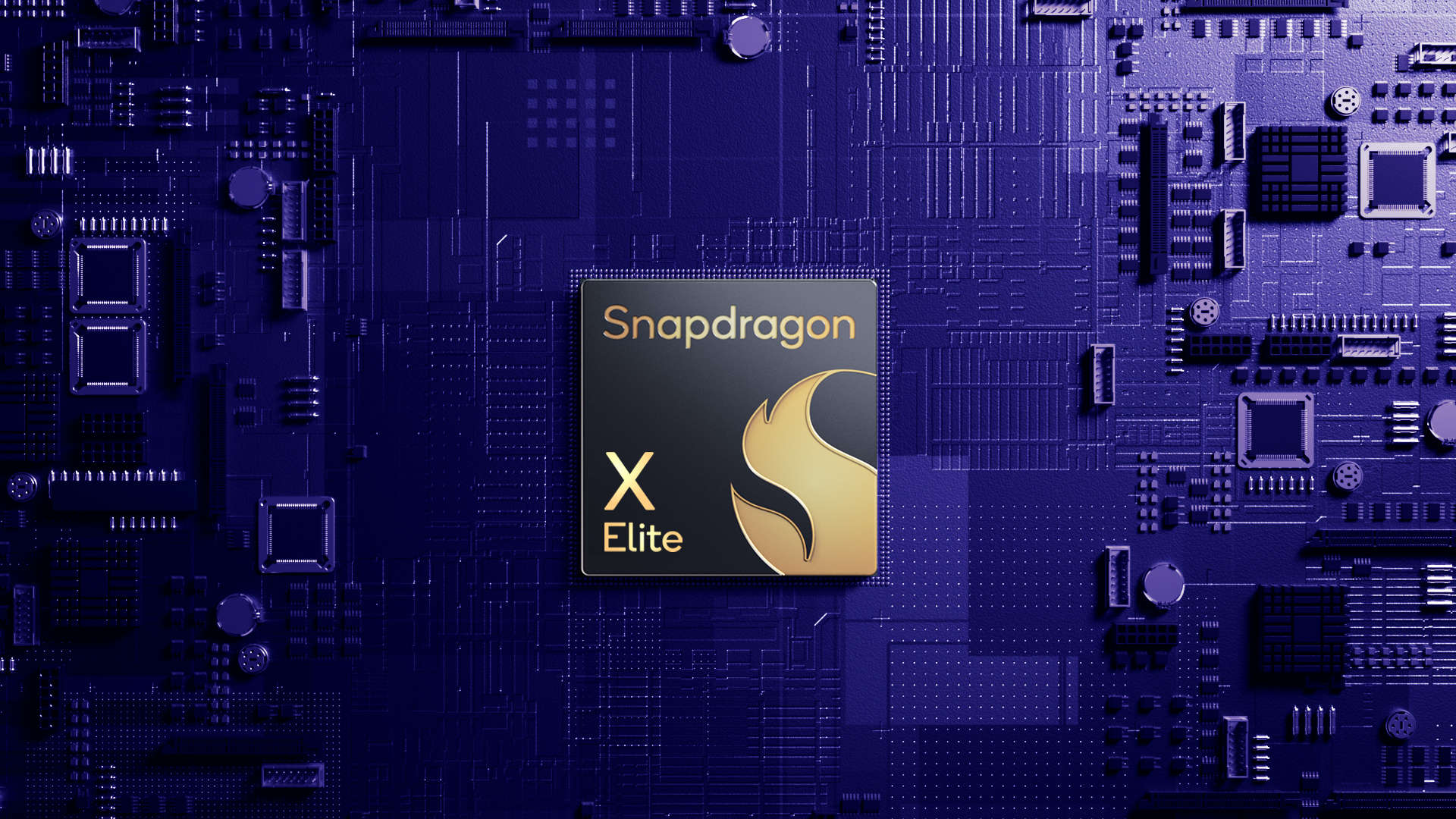Any links to online stores should be assumed to be affiliates. The company or PR agency provides all or most review samples. They have no control over my content, and I provide my honest opinion.
Qualcomm, a renowned player in the world of chipset manufacturing, has recently unveiled its latest creation – Snapdragon X Elite at this year’s Snapdragon Summit. This impressive new platform is anticipated to be the most powerful computing processor in Qualcomm’s portfolio to date.
The Making of Snapdragon X Elite
Constructed using a 4nm process, the Snapdragon X Elite and its new companion, the Qualcomm Oryon, boast a memory bandwidth of an impressive 136GB/s. This development has catapulted Qualcomm into the limelight, with PCs sporting this potent chip expected to grace the market in mid-2024.
Benchmark Performances
Qualcomm has confidently stated that the Snapdragon X Elite will outdo multiple Intel Core i7 processors on the Geekbench 6 benchmark test, a platform measuring multi-threaded performance. This ambitious claim has been supported with a chart, although it lacks clear labelling to provide a comprehensive understanding of the results.
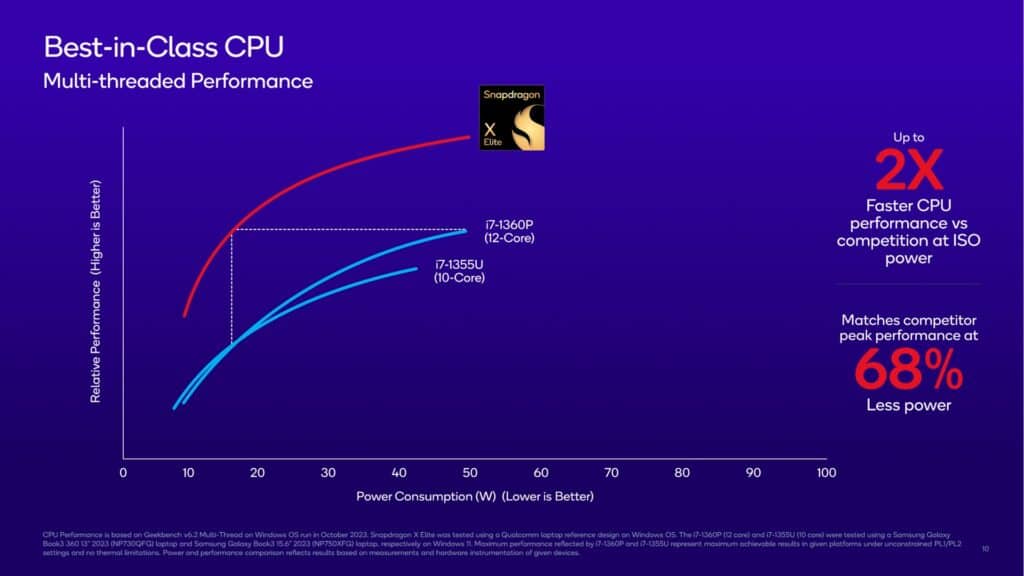
In a bold move, Qualcomm has also declared that its new chip will deliver “50% faster peak multi-thread performance” than the revered Apple’s M2 chip. This comparison is intriguing considering that X Elite has 50% more cores and consumes more power than the M2, naturally giving it an edge in peak multi-thread performance.
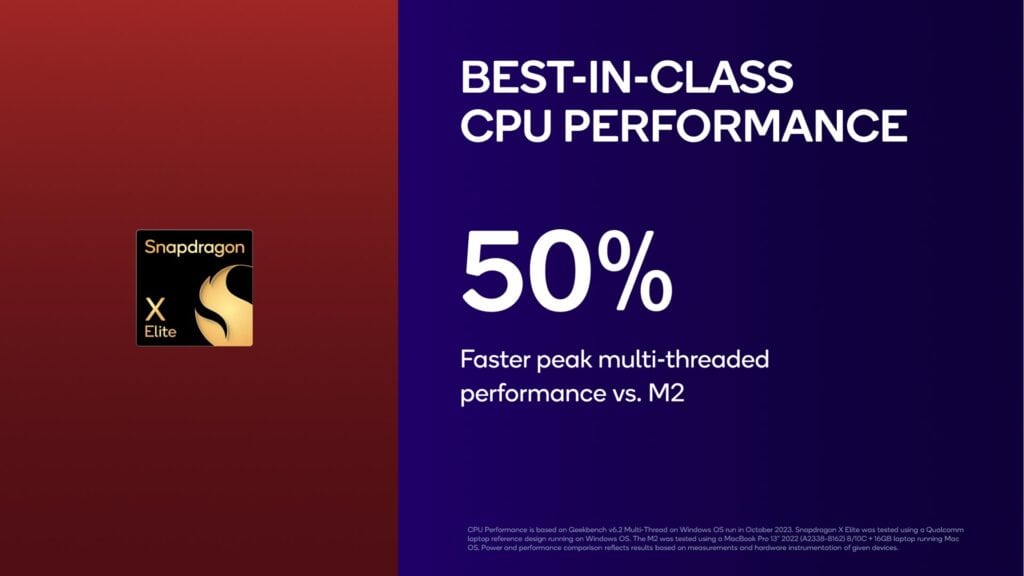
GPU Benchmarks
The X Elite’s prowess doesn’t stop at multi-thread performance. Additional charts illustrate the X Elite chip outperforming AMD’s Ryzen 9 7940HS on GPU benchmarks, again with a vaguely labelled “relative performance” as the y-axis.
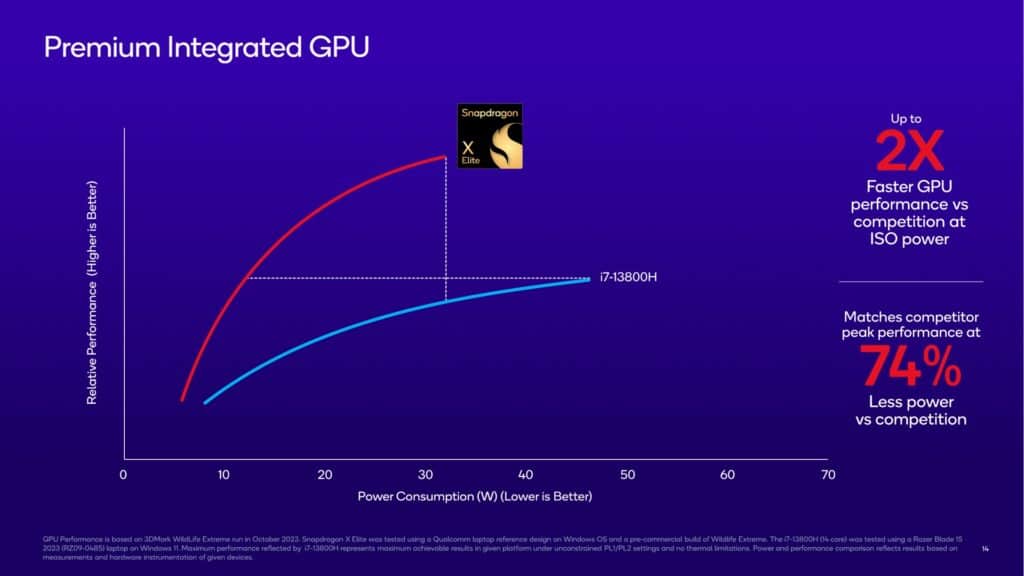
Snapdragon Seamless: Bridging Devices
Alongside the Snapdragon X Elite, Qualcomm also introduced a unique technology known as Snapdragon Seamless. This innovative cross-platform technology enables Android, Windows, and Snapdragon devices using other operating systems to work as one integrated system. In practice, this could mean effortlessly dragging and dropping files and windows across multiple devices, sharing screens, or even having earbuds automatically switch between devices.
Key partners for this venture include tech giants like Microsoft, Google, Dell, Lenovo, Honor, and Oppo. While this seems like a neat concept, its widespread adoption will largely depend on the success of Qualcomm’s PC chips.
The Snapdragon X Elite: A Closer Look
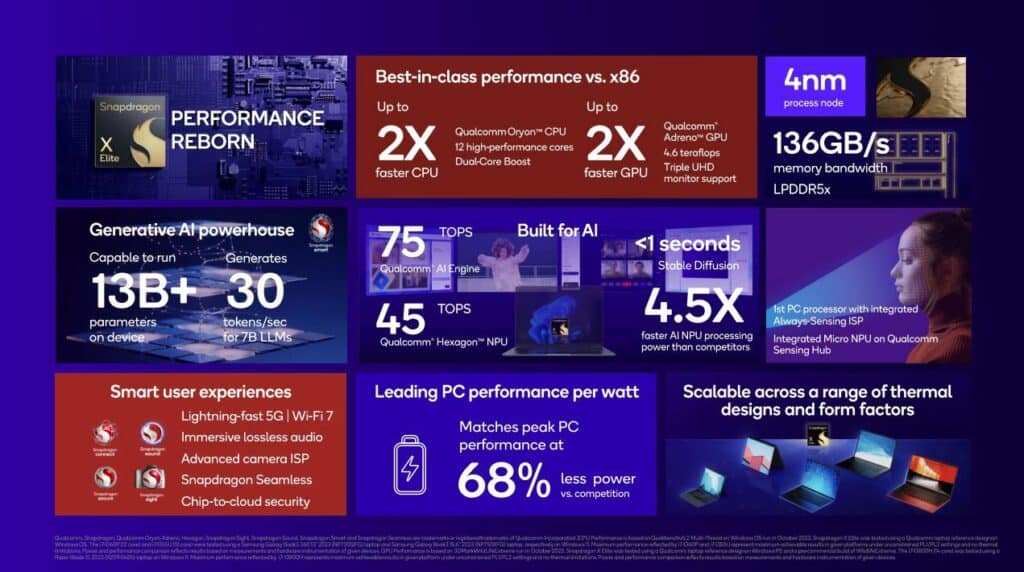
The Snapdragon X Elite is a 12-core, 4 nm chip designed to compete directly with Intel’s Core processors, AMD Ryzen chips in PCs, and, indirectly, Apple’s M2 and M3-series processors for Macs.
The Oryon Architecture
At the heart of the Snapdragon X Elite is its custom CPU architecture, codenamed Oryon. Unlike previous Qualcomm chips or those from Intel and Apple, the X Elite features 12 large cores as opposed to a combination of large and small cores.
When all cores are in action, they can run at a peak speed of up to 3.8 GHz, while one or two boosted cores can reach up to 4.3 GHz.
Performance and Power Efficiency
Qualcomm uses performance charts much like Apple’s to demonstrate the X Elite’s performance and power efficiency. The company claims that the X Elite will run up to twice as fast as an Intel Core i7-1355U or Core i7-1360P at the same power level, or it can match their performance while using 68 percent less power.
Furthermore, the X Elite can supposedly match the performance of a more robust Core i7-13800H using 65 percent less power, providing roughly the same multi-core performance at 30 W as the Intel chip provides at 90 W.
Battery Life and Temperatures
Lower power consumption also implies better battery life and lower temperatures, which could potentially allow for fanless MacBook Air-style designs. As of now, Qualcomm hasn’t disclosed any plans to release versions of the X Elite with fewer CPU or GPU cores enabled.
The Apple Connection
Although Qualcomm has primarily compared the X Elite’s performance and power usage to Intel’s, it’s clear that Apple Silicon is also a target. Qualcomm states that the X Elite has “50 percent faster peak multi-threaded performance” than the Apple M2, based on a multi-threaded Geekbench 6.2 test.
Looking Ahead
Although these claims are impressive, they should be taken with a pinch of salt until verified by independent testing. However, if these claims are accurate, the Snapdragon X Elite could potentially revolutionise both ultraportable PCs and thin-and-light workstations.
In the face of Apple’s upcoming M3-series processors on a new 3 nm manufacturing process, it will be interesting to see how Qualcomm’s X Elite holds up. Only time will tell whether this chip can truly deliver on its promises and shake up the tech landscape as we know it.
To conclude, the Snapdragon X Elite is a promising new development from Qualcomm that is worth keeping an eye on. Its impressive performance claims and innovative features could potentially make it a game-changer in the tech industry. However, as with all things in technology, the proof will truly be in the pudding.
I am James, a UK-based tech enthusiast and the Editor and Owner of Mighty Gadget, which I’ve proudly run since 2007. Passionate about all things technology, my expertise spans from computers and networking to mobile, wearables, and smart home devices.
As a fitness fanatic who loves running and cycling, I also have a keen interest in fitness-related technology, and I take every opportunity to cover this niche on my blog. My diverse interests allow me to bring a unique perspective to tech blogging, merging lifestyle, fitness, and the latest tech trends.
In my academic pursuits, I earned a BSc in Information Systems Design from UCLAN, before advancing my learning with a Master’s Degree in Computing. This advanced study also included Cisco CCNA accreditation, further demonstrating my commitment to understanding and staying ahead of the technology curve.
I’m proud to share that Vuelio has consistently ranked Mighty Gadget as one of the top technology blogs in the UK. With my dedication to technology and drive to share my insights, I aim to continue providing my readers with engaging and informative content.

